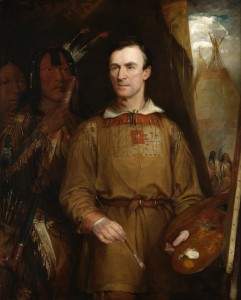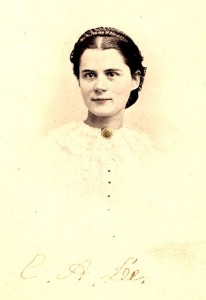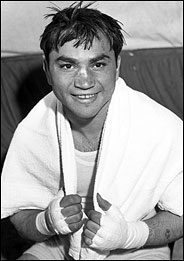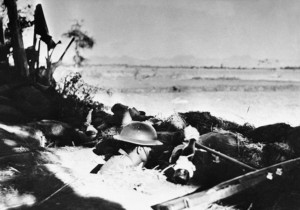“Ah, the Curraghs . . .”
By Richard Salzberg © 2013
In another of his extraordinary books, “The Faded Map: Lost Kingdoms of Scotland” (2010), Alistair Moffat [www.alistairmoffat.co.uk/] describes the historic visit by the Greek explorer and scientist Pytheus to “the land that would become Scotland” in about 320 BC:
Pytheus had travelled an immense distance, beginning his remarkable and little-known journey at the prosperous trading colony of Massilia, modern Marseilles. He came north in search of knowledge, business opportunities and excitement. All three were recorded in “On the Ocean,” written on the traveler’s safe return to the warmth of the Mediterranean . . . Pytheus almost certainly found himself traveling in a very different sort of craft from what he had been used to . . . seagoing curraghs, not unlike those still being built in the south-west of Ireland . . . Curraghs were quick, easy and cheap to construct.
Moffat goes on to describe the remarkable boats:
First a frame of greenwood rods (hazel was much favored, and willow) was driven either into the ground or into holes made in a gunwale formed into an oval. Then the rods were lashed together with cord or pine roots into the shape of a hull, upside down. Once all was tight and secure – the natural whip and tension of greenwood helped this part of the process very much – the framework was then made rigid by the fitting of benches which acted as thwarts. Over the hull hides were stretched and sewn together (or “united”) before being lashed to the gunwales. When the hides shrank naturally, they tightened over the greenwood rods and the seams were then caulked with wool grease or resin. Large curraghs could take twenty men or carry two tons of cargo and, since they were so straightforward to make from materials widely available, they and their small, round cousins, the coracles, would have sailed the coasts of Scotland and Ireland in their many thousands.
Inasmuch as these vessels were already ancient when encountered by Pytheus, and unique to the earliest Celts of Britain, we can know they have been used for millennia in Wales by that country’s ages-old, water-faring people.
¶ ¶ ¶ ¶
Fast-forwarding several thousand years and traveling to the New World of North America, we encounter the mysterious people known as the Mandans. Their territory along the Upper Missouri River in what is now central North Dakota, they received well-deserved attention during the Lewis and Clark Bicentennial (2003–2006), primarily in the context of Fort Mandan [http://fortmandan.com/], where the expedition was allowed to overwinter peacefully during 1804–1805; and where it is believed Lewis and Clark first met Sacagawea and her husband, Toussaint Charbonneau. Then, some 30 years later, the tribe is encountered by George Catlin, the remarkable artist and journalist, and, in fact, anthropologist [www.georgecatlin.org]. It is unlikely that anyone could describe George Catlin in a single paragraph better than another visionary, Peter Matthiessen [http://ow.ly/lzEv7]:
If Meriwether Lewis and William Clark were the first white Americans to explore the west half of the continent, from the Mississippi at St. Louis to the northwest Pacific coast, George Catlin traveled at least as many miles on his journeys by canoe and horse from Minnesota and the Montana border south to eastern Texas, as well as forays to the Gulf states and South Carolina, seeking to record the Indians in paintings and journals. Taken together, Catlin’s works constitute the first, last, and only “complete” record of the Plains Indians ever made at the height of their splendid culture, so soon destroyed . . .
 In his fascinating journals and letters, marvelously complemented by his incredible oil paintings and drawings, Catlin provides a great deal of information and detail about the tribe – impressions astonishing both in his day and our own. Among his observations:
In his fascinating journals and letters, marvelously complemented by his incredible oil paintings and drawings, Catlin provides a great deal of information and detail about the tribe – impressions astonishing both in his day and our own. Among his observations:
▪ “The Mandans are perhaps one of the most ancient tribes of Indians in our country. Their origin, like that of all the other tribes is from necessity, involved in mystery and obscurity.”
▪ “The ground on which the Mandan village is at present built, was admirably selected for defence; being on a bank forty or fifty feet above the bed of the river.”
▪ “The Mandans are undoubtedly secure in their villages, from the attacks of any Indian nation, and have nothing to fear, except when they meet their enemy on the prairie.”
▪ “The Mandans are certainly a very interesting and pleasing people in their personal appearance and manners; differing in many respects, both in looks and customs, from all other tribes which I have seen.”
▪ “A stranger in the Mandan village is first struck with the different shades of complexion, and various colours of hair which he sees in a crowd about him; and is at once almost disposed to exclaim that ‘these are not Indians’ . . . and amongst the women particularly, there are many whose skins are almost white, with the most pleasing symmetry and proportion of features; with hazel, with grey, and with blue eyes . . .”
And he also writes about their peculiar boats . . . (more…)
A Bridge Across the Kwai
By Richard Salzberg © 2013
 A recent viewing of David Lean’s “Bridge on the River Kwai” recalled a conversation in 2002 with a small, pleasant-faced man known to all as Woody. It occurred at the Chrysler Museum of Art in Norfolk, Virginia, in the sparest of its meeting rooms, a large, bright space with chairs and folding tables that could easily be moved to convert the area into dressing rooms for those who rent the museum for weddings. The conversation became a short piece published in Port Folio Weekly that year for Memorial Day entitled “Of Patriots and Quiet Men.”
A recent viewing of David Lean’s “Bridge on the River Kwai” recalled a conversation in 2002 with a small, pleasant-faced man known to all as Woody. It occurred at the Chrysler Museum of Art in Norfolk, Virginia, in the sparest of its meeting rooms, a large, bright space with chairs and folding tables that could easily be moved to convert the area into dressing rooms for those who rent the museum for weddings. The conversation became a short piece published in Port Folio Weekly that year for Memorial Day entitled “Of Patriots and Quiet Men.”
__________________________________________________
An engaging old fellow named Woody may have served you a drink once. As a bartender at the Norfolk Yacht and Country Club for 30 years, if he did serve you a drink it was a good one, and he probably told you a joke in his quick, quiet Southern-accented voice with an experienced twinkle in his eye. Woody is good at his job because he likes it. What he likes best: “Meeting people and swapping sea stories.”
The last part is a little joke because, although he would never say so, Woody can swap better sea stories than anyone he has ever served. As a teenager just out of high school in Chattanooga, Stanley Woody joined the Navy in 1940. Asked why, the answer is simple: “Employment.” When Woody’s aunt did not quite understand, an older sister had to sign for him. His 22-year Navy career began in Norfolk.
“I got off the train at the old station at the end of East Main, near where HarborPark is now.” The bright lights and neon-lit action of the old Navy town impressed the youngster as “a good place for liberty;” but Stanley was headed for 12 weeks of Basic Training. The first thing an old Chief told the raw recruit from Tennessee was easy enough: “Forget your first name.”
During the next five years Woody saw a lot of history, and he was a part of everything he saw. His very first ship was the USS Houston [ http://ow.ly/iCH57 ]. The heavy cruiser was the flagship of the fabled Asiatic Fleet, and the favorite pre-war ship of FDR. And – with Woody onboard as the youngest member of her 1100-man crew – she was soon to become known as “the Ghost of the Java Sea.” The young sailor got to see a bit of the exotic old world before full-scale war broke out in the Pacific, as the still sharply etched chain tattoo on his right wrist attests. (“I got that inShanghai in 1941. I woke up the next morning, and it felt like my whole arm was on fire.”) (more…)
Eleanor Agnes Lee: A Sweet Quiet Sadness
By Richard Salzberg © 2013
_________________________________________
In visions of the dark night
I have dreamed of joy departed –
But a waking dream of life and light
Hath left me broken-hearted.
From “A Dream” by E.A. Poe (1829)
¶ ¶ ¶ ¶
While pursuing research for the play “True Honor, True Glory” (see www.highbridgepublications.com), the character of Agnes Lee quickly became rather revelational. A recent visit to the Lee Chapel & Museum at Washington and Lee University (www.leechapel.wlu.edu) impelled a re-acquaintance, with magical items in its remarkable exhibition spaces making Agnes’ story and that of her family all the more compelling. Accompanying the poignancy and accomplishments of her life, a number of ongoing considerations emerged, including broad definitions of “courage” (and to what degree suffering might contribute to that), and just what it means to be remembered.
 Eleanor Agnes Lee (1841–1873) was the third of four daughters and the fifth of seven children of Mary Anna Custis and Robert E. Lee, born at the family’s estate at Arlington. Despite direct descendancy from George Washington (her maternal grandfather was the president’s adopted son and the builder of Arlington) and the aristocratic Lees of Virginia and England, in today’s parlance Agnes would be considered an “army brat.” Most of her life was spent in Virginia, including her years at the Virginia Female Institute in Staunton, now the Stuart Hall School. The most notable exception was the time the family spent in New York, when her father served as Superintendent of West Point, from 1852 to 1855. Those antebellum years through 1858 were evocatively recounted in “Growing Up in the 1850s: The Journal of Agnes Lee,” a colorful reminiscence published only in 1984, with the years at West Point recalled with particular fondness.
Eleanor Agnes Lee (1841–1873) was the third of four daughters and the fifth of seven children of Mary Anna Custis and Robert E. Lee, born at the family’s estate at Arlington. Despite direct descendancy from George Washington (her maternal grandfather was the president’s adopted son and the builder of Arlington) and the aristocratic Lees of Virginia and England, in today’s parlance Agnes would be considered an “army brat.” Most of her life was spent in Virginia, including her years at the Virginia Female Institute in Staunton, now the Stuart Hall School. The most notable exception was the time the family spent in New York, when her father served as Superintendent of West Point, from 1852 to 1855. Those antebellum years through 1858 were evocatively recounted in “Growing Up in the 1850s: The Journal of Agnes Lee,” a colorful reminiscence published only in 1984, with the years at West Point recalled with particular fondness.
The years growing up at Arlington seem idyllic. The four Lee girls (Mary, Annie, Agnes, and Mildred) had their gardens, their tutors and books, their array of dogs and cats and chickens, and the dolls with whom to share porcelain tea parties; while the boys (Custis, Fitz, and Rob) also had whatever they needed, along with the natural world of their hundreds of acres overlooking the Potomac River. And there was also always a steady flow of visitors and playmates, cousins from their large extended family, and a host of friends.
Agnes was deeply religious, and confirmed in the Episcopal Church in 1857. Whether or not impelled by that, she would today be considered a social activist. Despite laws prohibiting it, “. . . she helped to instruct the Arlington slaves by conducting a Sunday evening school for them, and by instructing individual children before and after breakfast.” Although contemporary standards are ever too easily applied to societies of past centuries, that effort and commitment for its time and place was as radical as it was commendable. It also says much about the character and values of the Lee family. (more…)
Beryl Rasofsky: 1909 – 1967
By Richard Salzberg © 2013
_________________________________________
“I did a search, like you said, on Barney Ross,” he was saying. “What a story. Really unbelievable stuff. The images that came up were amazing – those classic boxing photos. Man. . . you know, he really was a good-looking guy.”
“Yeah, a good-looking Jewish boy. And tough as nails. . .”
“A real hero. There was just one thing.”
“What’s that?”
“More than half of the pictures that came up were of Sylvester Stallone, or some scary-looking Stallone action figure.”
“Oh, yeah. The ones that looks like Satan on steroids in camo togs and a beret.”
“Well, I don’t care how long ago it was. . . like you said, the real Barney Ross needs to be a household name.”
“He was a household name.”
¶ ¶ ¶ ¶
 How many “definites” are there in the life of a great man – or how many absolutes are there in anyone’s life? Despite endless variables and interpretations, key quantifiables can be separated from the lore of any of us. For those who are renowned, when the definites are melded with the lore – then that becomes the legend. Too frequently in our time, however, without benefit of such venerable oral traditions as those of the Basque, the Celts, or the Druse, one generation’s icon and inspiration can become like dust for the generations which follow.
How many “definites” are there in the life of a great man – or how many absolutes are there in anyone’s life? Despite endless variables and interpretations, key quantifiables can be separated from the lore of any of us. For those who are renowned, when the definites are melded with the lore – then that becomes the legend. Too frequently in our time, however, without benefit of such venerable oral traditions as those of the Basque, the Celts, or the Druse, one generation’s icon and inspiration can become like dust for the generations which follow.
All of the above applies to the great Barney Ross.
No matter how condensed, not a word on the subject of Barney Ross could be written today without referencing Douglas Century’s commendable “Barney Ross” (New York: Nextbook/Schocken: 2006).
To try and summarize such a remarkable life which defines some of the most dramatic chapters of the 20th century is a challenge. Born poor – incredibly poor –in New York’s Lower East Side in 1909, Dov-Ber Rasofsky, later Beryl Rasofsky, was the third of six children of Hebrew teacher Itchik Rasofsky and his wife Sarah, new immigrants who had only narrowly escaped the Russian pogroms of the early 1900s. Looking for better opportunities in the west, in 1911 Itchik moved his young family to Chicago before Beryl was two years old, where they settled in the Maxwell Street ghetto. Remembering that the word “ghetto” originated meaning a place specifically for Jews, Maxwell Street is described by Louis Wirth in D. Century’s book as being “full of color, action, shouts, odors, and dirt. . . resembl[ing] a medieval European fair more than the market of a great city today.” Here the Talmudic scholar ran a grocery store “so ramshackle that it had no name;” and so small that no more than three customers could “stand at one time amid the bags of flour and canned goods and pickle barrels.” (more…)
December 7: Bataan, Corregidor, and Bill Wells
By Richard Salzberg © 2012
_____________________________________________
 December 7, 1941, that “Day of Infamy,” marks the anniversary of the Japanese surprise attack at Pearl Harbor. Less well-remembered are the coordinated attacks at the same time on other American military installations in the Pacific, including Wake Island, Guam – and the Philippines. The article below originally appeared in Port Folio Weekly magazine in 2000. It remains not only a tribute to one man with his heart such a part of the history of the last century, but also to all of the men, and women – the beloved nurses who were the “Angels of Bataan” and the brave Filipinas – who were left to their fates in the Philippines. Long ago perhaps, but they must never be forgotten.
December 7, 1941, that “Day of Infamy,” marks the anniversary of the Japanese surprise attack at Pearl Harbor. Less well-remembered are the coordinated attacks at the same time on other American military installations in the Pacific, including Wake Island, Guam – and the Philippines. The article below originally appeared in Port Folio Weekly magazine in 2000. It remains not only a tribute to one man with his heart such a part of the history of the last century, but also to all of the men, and women – the beloved nurses who were the “Angels of Bataan” and the brave Filipinas – who were left to their fates in the Philippines. Long ago perhaps, but they must never be forgotten.
_____________________________________________
Bill Wells by Richard Salzberg
You want to talk heroes, let’s talk about the guys from Bataan. – Mike Royko, Journalist
The three strangers found themselves sitting together at a small party following the christening of a new baby, the daughter of shared young acquaintances.
As is frequent at such extended affairs, the conversation drifted towards the generalities of generational experience, with one old fellow reminiscing in an animated fashion about London during the early days of the war. A reporter then for Life Magazine, he recalled the Blitz and all the stress and fast living that always seems to accompany a war against a civilian population. His account was lively and interesting, and he recollected it with some fondness. Apartments, like good food and decent liquor were certainly more difficult to come by, he said, and it was all quite dangerous, of course, but “all in all, it had not been such a bad time to get through,” for a young man such as he was then.
Clearly of the same World War II generation, the other older man was taller and quite thin, quietly polite in his plain dark suit. He listened respectfully enough, offering an occasional, well-timed nod. At a lull in the London reminiscences, the third man, younger than the other two by about half, sought to be inclusive with a not very creative variation of the once basic, now generally forgotten question: “So, what did you do during the war?”
After a moment the thin man cleared his throat, then said simply: “I was in thePhilippines.” The younger man was familiar enough with that chapter of history to understand some of what that particular response might mean.
Pausing before he asked in an effort to appear discreet, but impelled by a fierce curiosity, he asked respectfully, “Bataan and Corregidor?”
“Yes,” the older man answered. “I was in the Navy.”
That was Bill Wells. (more…)

